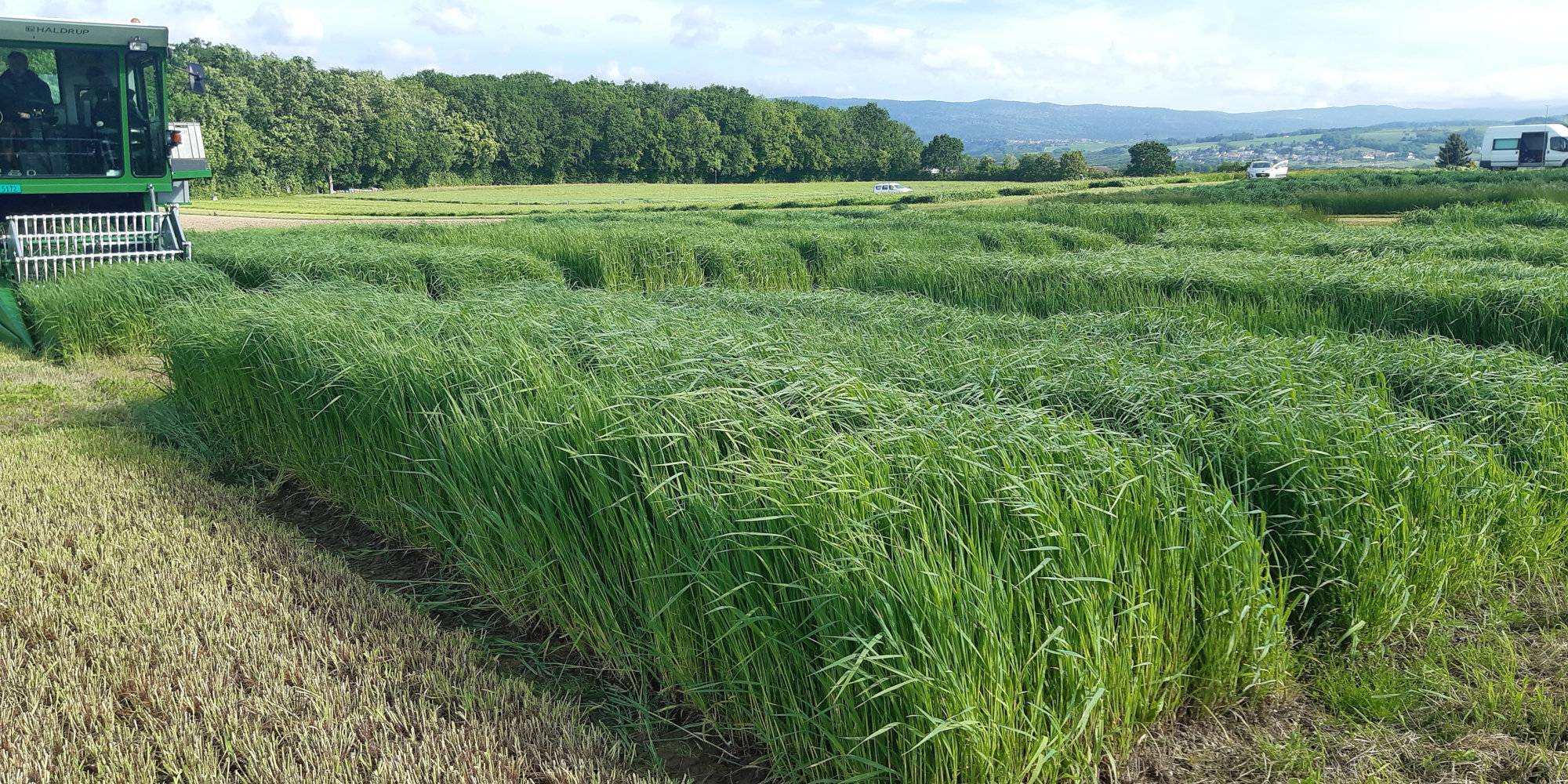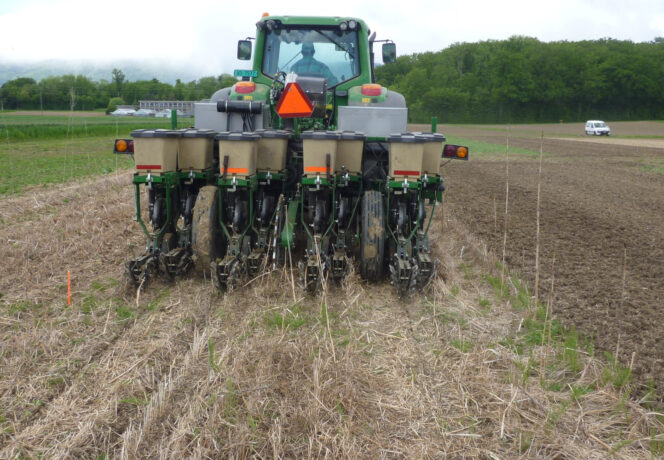New Recommended Varieties of Cocksfoot
Photo: Rainer Frick,
Agroscope
Cocksfoot is a productive, robust and drought-tolerant forage grass often used in Swiss grass leys. The most recent variety testing by Agroscope has led to the recommendation of several new top-performing cultivars.
Cocksfoot is a perennial, productive forage grass suitable for intensive use. As a typical tussock grass, it particularly lends itself to cutting. Cocksfoot copes very well with harsh winters and thanks to its dense root structure, it adapts well to dry conditions. In terms of forage quality, cocksfoot lags behind the rye grasses. However, digestibility varies significantly between individual cultivars.
Cocksfoot is a valuable partner in clover/grass mixtures
Cocksfoot grows relatively slowly in the first year. However, it becomes stronger with each use (cut or grazing), eventually taking the place of short-lived rye grasses as their yields decline. Cocksfoot is thus used as the ‘back-up’ in three-year or longer standard mixtures (SMs), such as SM 330 and SM 430. Furthermore, cocksfoot is a useful grass in mixtures for moderately dry to dry sites.
Twenty-six cultivars agronomically tested over three years
From 2022 to 2024, Agroscope tested 26 cultivars of cocksfoot (Dactylis glomerata) to determine their agronomic characteristics. The trials conducted at six different sites studied the following characteristics: yield, early growth, vigour, competitive ability, persistence, resistance to leaf diseases, winter hardiness and forage digestibility.
Six new varieties recommended
Cocksfoot cultivars are tested into two groups based on differences in earliness. Three new cultivars from the group of early- to mid-maturing varieties have been added to the List of Recommended Varieties of Forage Crop: Tenderly, Destiny and Bardasha. This more than doubles the number of cultivars in this previously sparse range, which hitherto contained only two recommended cultivars. Tenderly achieved by far the best results in the early-maturing group. Its above-average scores for persistence, yield, vigour, competitive ability and disease resistance are particularly noteworthy. Destiny and Bardasha also produced very good results. The fact that Tenderly and Bardasha showed slight weaknesses in digestibility did nothing to diminish their high overall score.
Five new cultivars met the agronomic criteria for a recommendation in the group of mid- to late-maturing varieties – Belenus, RGT Bently, 22DGL 256, Rosseur and Roprix. Belenus was the front runner by a long margin in this earliness group. Results for digestibility were particularly impressive. RGT Bently, Rosseur and Roprix can be added to the List of Recommended Varieties immediately. However, Belenus and 22DGL 256 are still required to pass the examination of distinctiveness, uniformity and stability of external characteristics required for approval, which is currently taking place abroad.
Three varieties removed from the list
The previously recommended varieties Berta (early-maturing range), Pizza and Prato (late-maturing range) have been removed from the list of recommended forage crops due to the results of this latest programme of variety testing. They can still be used in the standard mixtures until 31 December 2027.
Conclusions
- Cocksfoot is an important forage grass in Swiss leys.
- From 2022 to 2024, Agroscope field-tested 26 cultivars of cocksfoot to assess their agronomic suitability.
- Six varieties have been newly recommended: Tenderly, Destiny and Bardasha (early-maturing range) as well as RGT Bently, Rosseur and Roprix (late-maturing range).
- The three previously recommended varieties Berta, Pizza and Prato have been removed from the list.
- The range of recommended early- to mid-maturing varieties has significantly increased.
- The quality of the recommended varieties of cocksfoot available has improved considerably.
Bibliographical reference
Sechs neue Knaulgrassorten empfohlen.



